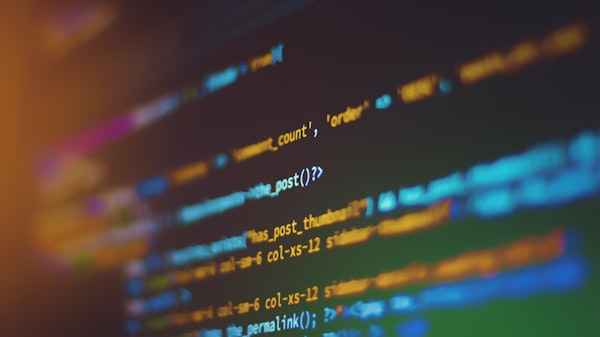- 欢迎使用千万蜘蛛池,网站外链优化,蜘蛛池引蜘蛛快速提高网站收录,收藏快捷键 CTRL + D
如何进行对比分析?提升工作效率的5个实用方法



Contrastive learning is a powerful technique in machine learning that allows models to understand the differences and similarities between different classes or groups. By presenting the model with pairs of similar and dissimilar items, it can learn to differentiate and classify them accurately. This approach has been widely applied in various domains including image recognition, natural language processing, and speech recognition.
To conduct a contrastive analysis, we need to compare two or more objects, concepts, events, or phenomena to understand their similarities and differences. This method helps us gain a deeper understanding of the characteristics, advantages, and disadvantages of the subjects under study. Here are some key aspects of contrastive analysis:

1. Definition and Purpose
Contrastive analysis is a research method used to compare the similarities and differences between two or more objects, concepts, events, or phenomena.
The purpose is to reveal the commonalities and distinctions among the subjects of study to gain a better understanding and evaluation of them.
2. Types of Contrastive Analysis
Contrastive analysis can be classified based on the type of objects being compared, such as physical objects, concepts, events, or phenomena.
It can also be categorized based on the approach of comparison, including direct comparison, indirect comparison, item-by-item comparison, or comprehensive comparison.
3. Steps of Contrastive Analysis

The steps involved in conducting a contrastive analysis are as follows:
- Identify the subjects of study: Select the objects or concepts that need to be compared and analyzed, which can be two or more.
- Collect data: Gather relevant information and data about the subjects of study.
- Analyze the data: Organize and analyze the collected data to identify the similarities and differences between the subjects.
- Draw conclusions: Based on the analysis results, draw conclusions about the contrastive aspects of the subjects.
4. Applications of Contrastive Analysis
Contrastive analysis has various applications, including:
- Academic research: Contrastive analysis is widely used in research papers and publications across disciplines such as literature, history, philosophy, and sociology.
- Business decision-making: Companies can employ contrastive analysis to identify their strengths and weaknesses by comparing themselves to competitors and industry trends, aiding in market strategy and product positioning.
- Policy-making: Government entities can make use of contrastive analysis to formulate policies by comparing the experiences and lessons learned from different countries and regions.

5. Advantages and Limitations of Contrastive Analysis
Contrastive analysis offers several advantages:
- In-depth understanding: It helps gain a deeper understanding of the subjects of study, revealing their characteristics and patterns.
- Comprehensive perspective: It provides a broader perspective, avoiding one-sidedness in evaluations.
- Problem discovery and improvement: Contrastive analysis helps identify problems and suggests alternative solutions.
However, there are some limitations to consider:
- Subjectivity: The results of contrastive analysis can be influenced by the subjectivity of the researchers.
- Data and information requirements: Conducting contrastive analysis may require a significant amount of data and information, making the process cumbersome.
- Applicability to abstract and complex concepts: Contrastive analysis may face challenges when applied to certain abstract concepts or complex phenomena.
In conclusion, contrastive learning is an effective method in machine learning, enabling models to differentiate between different classes or groups. It has diverse applications across domains and offers valuable insights. As a reader, feel free to comment, follow, like, and thank you for reading and engaging with the article!
| 广告位招租-内容页尾部广告(PC) |
相关文章推荐
- C语言与C#语言下的车牌照识别实现比较
- CDN和双线服务器:加速网站访问的选择 - 为什么选择CDN
- 如何在Android中获取网络位置?简单步骤解析与实例代码
- "CDN与反向代理:加速网站访问的双重策略" "KooPhone
- 普通服务器和CDN服务器的区别:哪种适合您的网站?_解析专
- AI开发平台哪个更适合你?深度对比AI开发平台ModelArts
- 1. 什么是API接口数据格式?如何选择适合你的API接口数
- CDN设置IP和源站域名的区别:解析优势对比 接入CDN的加
- 1. "如何使用array_diff_函数在PHP中找到差异?优化数组
- 1. 了解API网关费用的关键因素:费用结构、计费模式等 2
好文分享最新文章
- Android网络制式:一键查询、获取网络运营商信息的最佳方法
- "CentOS常用命令:掌握这些CentOS命令,轻松管理你的服务器"
- PersistentVolumeClaims状态有什么问题?如何替换PersistentVolumeClaims
- "什么是SQLPlus权限?如何分配和管理SQLPlus权限?"
- Linux Mint支持UEFI启动吗?完全指南和解决方案
- "你的ASP网站是否存在漏洞?了解漏洞报价和网站漏洞扫描的最佳解决方案"
- PHP云服务器配置:如何选择最适合PHP的云服务器和优化需求
- 1. "com的域名多少钱?了解域名注册费用及费用计算方式" 2. "为什么com域名如此受欢迎?解析常见顶级域名的优势与价格"
- 1. "What are the Key Differences Between API GL4 and GL3? A Comprehensive Comparison" 2. &
- "为什么选择使用APP建站?教你轻松入门建立自己的网站"















)


)

